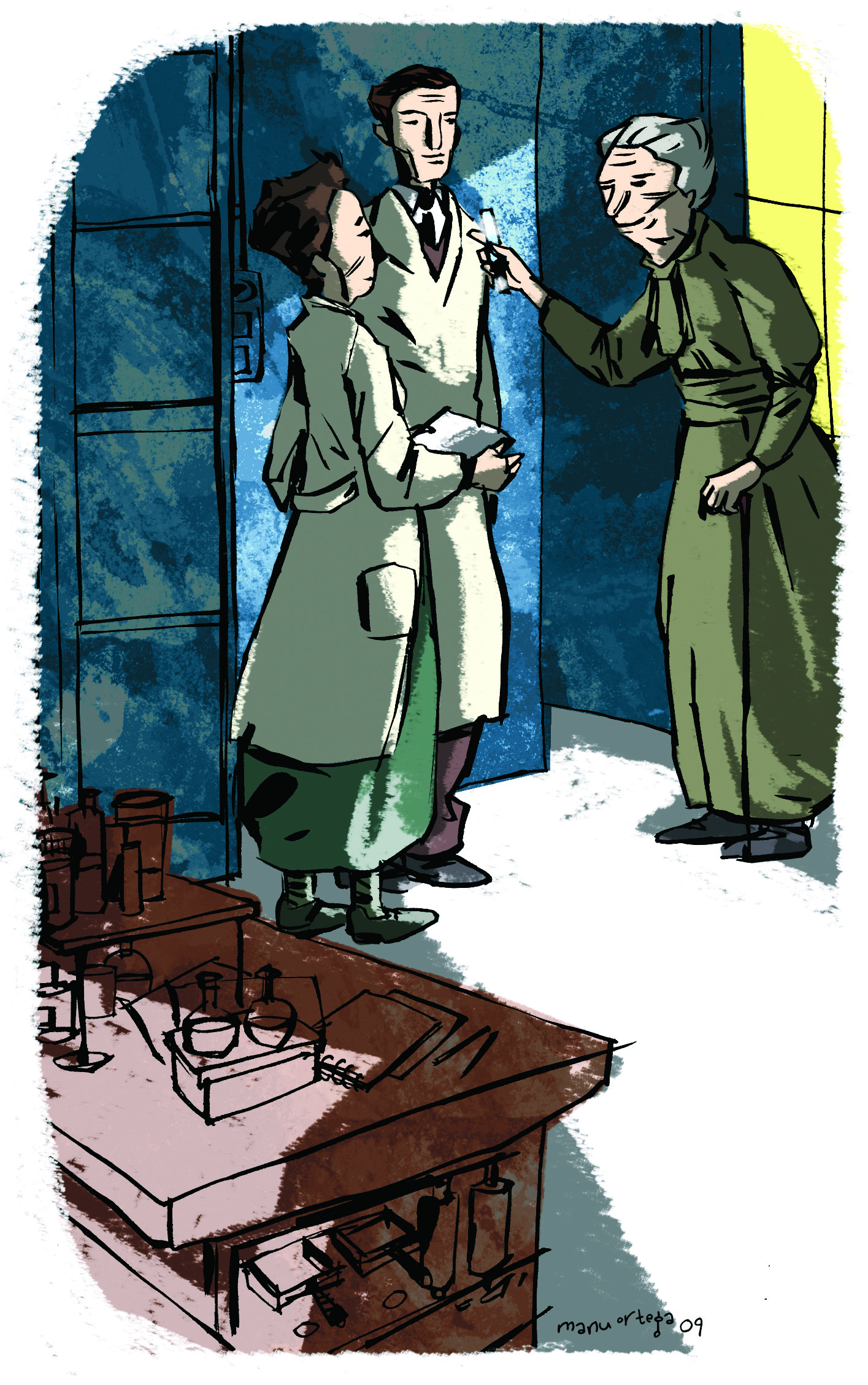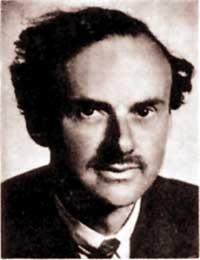In the third, Novel
2009/09/01 Etxebeste Aduriz, Egoitz - Elhuyar Zientzia Iturria: Elhuyar aldizkaria

James Chadwick could not believe what he was reading. The article of the marriage Joliot-Curie surprised. The result of the experiment was surprising, but the interpretation seemed impossible. Behind this there could be another thing. Chadwick smells of neutrons announced by Ernest Rutherford.
Twelve years earlier, in 1920, Rutherford spoke of neutrons. At that time they knew the protons (discovered by Rutherford) and the electrons. But Rutherford predicted that there could be other unloaded particles in the nuclei of atoms.
It was directed by Rutherford, Chadwick, who taught the article to the teacher. "I don't believe!" was his response and sent him to repeat experiments.
This experiment was first performed by the Germans Walter Bothe and Herbert Becker. Bombarding beryllium with alpha particles emitted by the polonium, they saw that it emitted a very penetrating radiation. They believed that the radiation was a gamma ray of great energy.
The marriage Frederic Joliot and Irene Curie had a stronger polonium source than anyone and repeated this experiment. They saw that those alleged gamma rays emitted by beryllium were able to eject protons from a sheet of paraffin. And that's what they published. It was an incredible discovery. Because gamma rays, those particles without mass, have such an effect...
Surprisingly, it was impossible. Chadwick laid hands on the work. He had to walk fast, more people had also realized what there could be behind that article. Without following the rule of not working from the six of the Cavendish institute, after three weeks exhausted, he was able to demonstrate that what the beryllium emitted was not gamma rays: they were mass particles like protons and without charge, neutrons!
Upon learning of Chadwick's work, Curie and Joliot realized what they lost. They faced neutrons, but they couldn't see them.
Three years later, in 1935, Chadwick received the Nobel Prize for that discovery.
When Rutherford himself asked Jolio if he did not realize that he had the neutrons mentioned in the 1920 conference, he replied: "because I had not read it; believing it was going to be a usual fluidity without new ideas..."
It was a hard blow and so Joliot wrote it: "It is very painful to advance other laboratories by making our experiences yours." This type of options are scarce in the path of a researcher. But, even if it seems a lie, that same year they were escaped a second chance.
Reading the work of physicist Carl David Anderson they realized. Anderson discovered a new particle: positron (similar to electron but with positive load). He photographed the footprint left by the new particle through a device called Wilson's camera. Wilson's camera is a vapour filled chamber through which the particles passing through it, when condensing it, mark the path traveled by the particles. The photographs allowed to record the trajectories of the particles.
In a magnetic field, the charged particles are diverted and, depending on the load, they go to one side or the other. Anderson detected that a particle performed the same curve as electrons, but on the contrary.
Joliotek and Curie also had a camera of Wilson, and upon learning of Anderson's they realized that they had also taken the picture of the deviant electrons in the 'wrong sense'. Once the photos were reviewed, the suspicion was confirmed: there were the positrones.
The novel was given to Anderson in 1936.
Docile for not finding positrons, the marriage began to investigate better those particles. Wilson's camera was prepared and the aluminum was first bombed with alpha particles. To detect the particles emitted by aluminum as a result of the bombing, they had a Geiger-Müller counter. But the surprise came when he stopped bombing. The counter continued to sound.
They couldn't believe it. The experiment was repeated again and again. And always the same result.
When bombarding aluminum it became the radioactive isotope of phosphorus, which emitted positrons (which was the one that detected the counter). They created a radioactive element from common aluminum!
This time they did not waste time. They immediately published the discovery. And in that case others stayed with the end.
In Berkeley, the Ernest Lawrence team worked daily with a cyclotron, where they bombed everything. But the cyclotron and the counter Geiger-Müller had the same switch: when the cyclotron was turned off the counter...
When they saw the article of the couple Joliot-Curie, they changed the cables and performed the test immediately. Once the cyclotron was turned off, the counter continued to sound. The investigators present were watching each other and would never forget that sound.
Marie Curie had very different feelings. Irene's and Frederic's work was very close, and that discovery made him very happy. "I will never forget the face of happiness that Irene and I had when we showed her the first artificial radioelement in a small glass tube," Joliot explained. "I can still see that I catch the tube with his fingers burning the radios. He approached the tube to the counter and could hear the signals. It was undoubtedly the happiest time of his life."
Shortly afterwards Marie Curie died. He would have liked to see the Novel that his daughter and son-in-law received in 1935.

Gai honi buruzko eduki gehiago
Elhuyarrek garatutako teknologia






